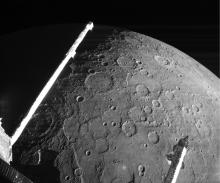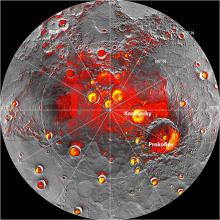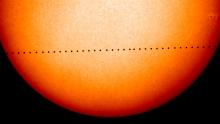Listen to today's episode of StarDate on the web the same day it airs in high-quality streaming audio without any extra ads or announcements. Choose a $8 one-month pass, or listen every day for a year for just $30.
You are here
Moon and Mercury
Mercury is putting in one of its best appearances of the entire year. The little planet is low in the west-northwest as evening twilight begins to fade. It looks like a fairly bright star. And tonight, it’s quite close to a bright guidepost: the crescent Moon.
Because Mercury is the closest planet to the Sun, it’s usually hidden in the Sun’s blinding glare. Over the course of a year, it’s in good view for only a few weeks. It’s visible either shortly after sunset or before sunrise.
Some apparitions are better than others, though. It depends on a couple of factors.
One is how far Mercury appears from the Sun. That depends on the relative positions of Earth and Mercury in their orbits. Right now, Mercury is at a pretty good distance from the Sun — about 22 degrees — twice the width of your fist held at arm’s length. It’ll maintain that separation for a few more days.
The other factor is the angle of Mercury’s path across the sky, which varies based on the time of year. This is a good time, with Mercury’s path at a high angle relative to the horizon. So when you put the two factors together, it means Mercury is in great view — one of its best appearances of the year.
The even brighter planet Venus is below Mercury shortly after sunset. It’s so low that it’s a little harder to spot. It will move higher into the sky each evening, though, as it prepares for a good showing this summer as the brilliant “evening star.”
Script by Damond Benningfield





